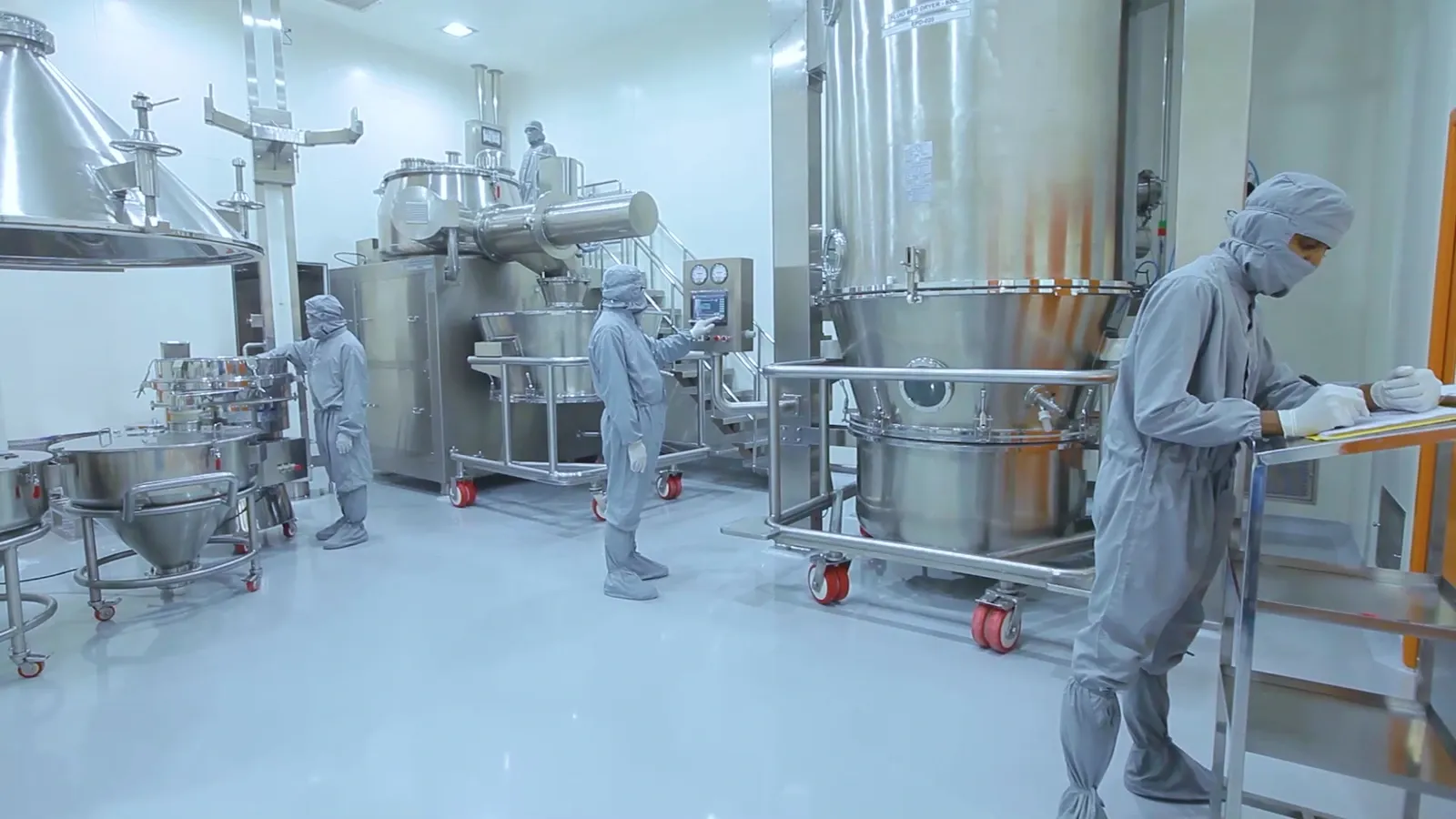Market News
NIFTY50 Q2FY26: EBITDA jumps 13% as cooling inflation, rate cuts power earnings
.jpeg)
8 min read | Updated on November 18, 2025, 15:24 IST
SUMMARY
Supported by lower inflation and steady demand, NIFTY50 companies reported a 7.59% rise in sales, up from 5.98% in the previous quarter. Several sectors saw healthy traction.
Stock list

The interest cost for NIFTY50 companies fell to 4.96% in the second quarter. Image: Shutterstock
NIFTY50 companies reported a quarter of strong operational performance in the second quarter of the current financial year (Q2FY26), with both revenue and operational profitability improving despite external challenges, including the steep 50% tariff imposed by the United States on Indian merchandise exports.
The resilience of India Inc came on the back of a favourable macroeconomic backdrop, easing inflationary pressures and lower interest rates.
A key driver of the earnings momentum in the July–September period was a sharp moderation in retail inflation, which averaged 1.22% in Q2FY26. The cooling inflation offered companies a breather on input costs and improved pricing flexibility, allowing them to expand volumes and push top-line growth higher, analysts noted.
Additionally, the broader macroeconomic environment remained supportive. The Indian economy registered a strong GDP growth of 7.8% in Q1FY26, driven largely by the services sector. The robust economic activity created favourable demand conditions heading into the second quarter, benefiting sectors such as financials, autos, consumer durables, capital goods and infrastructure.
Rate cuts boosts profitability
One of the most impactful contributors to the earnings surge was the Reserve Bank of India’s (RBI) aggressive monetary easing cycle. The central bank reduced the repo rate by 100 basis points so far this year, bringing the repo rate down to 5.5%. This translated into a sharp drop in interest costs for corporates.
According to data from ACE Equity, the interest cost for NIFTY50 companies fell to 4.96% in the second quarter, a substantial improvement from 9.62% in the previous quarter. The reduction in financing expenses alone boosted EBITDA margins by over 425 basis points.
Supported by lower inflation and steady demand, NIFTY50 companies reported a 7.59% rise in sales, up from 5.98% in the previous quarter. Several sectors saw healthy traction.
Capital goods and industrial companies saw increased order flows due to government and private capex revival.
Oil & gas and commodity-linked sectors contributed significantly to overall earnings, helped by stable input prices and improved refining margins for oil marketing companies.
Banks and NBFCs posted solid growth owing to steady credit demand, better asset quality and lower slippages.
The uplift in demand was further supported by GST rate rationalisation, festive season buying and broad-based consumption recovery.
Operational improvement remained a highlight of the quarter. NIFTY50 companies reported an EBITDA growth of 12.82% annually, substantially better than the 8.57% seen in the previous quarter on the back of lower borrowing costs, better cost optimisation, moderation in commodity prices, higher capacity utilisation and favourable operating leverage in several sectors.
Indian equity markets also benefited from a broad global rally, with the MSCI World Index gaining 1.9% and the MSCI Emerging Markets Index rising 4.1% in October. Easing global inflation, stronger-than-expected corporate earnings worldwide, and expectations of a possible US–India trade agreement helped lift investor sentiment, NSE said in its monthly report.
Despite export headwinds and geopolitical uncertainties, the combination of cooling inflation, lower interest rates, robust GDP growth and healthy domestic consumption has placed India Inc on a solid footing. NIFTY50 companies have shown that the underlying earnings cycle is strengthening, supported by improved margins, stable demand, and a favourable macroeconomic environment.
Meanwhile, retail inflation dropped to a record low of 0.25% in October, boosting hopes of a rate cut in December. As rate cuts continue to trickle into the broader economy and festive momentum carries into the second half of FY26, analysts expect earnings visibility for India’s largest companies to remain strong.
How the top NIFTY50 companies performed in Q2:
Reliance Industries Q2 review
Reliance Industries, the country's most valuable company, reported net profit of ₹18,165 crore in the second quarter of the current financial year, marking an increase of 10% from ₹16,563 crore in the same period last year.
Billionaire Mukesh Ambani-backed company’s revenue from operations jumped 10% to ₹2,58,898 crore in the July-September period from ₹2,35,481 crore in the year-ago period.
The company on a consolidated basis reported a strong operational performance, as its operating profit, also known as EBITDA (earnings before interest, tax, depreciation and amortisation), jumped 18% to ₹45,885 crore and its operating profit margin expanded by 120 basis points to 18%.
HDFC Bank Q2
HDFC Bank, the country's largest private sector lender, reported net profit of ₹18,641 crore in the second quarter of current financial year, marking an increase of 11% from ₹16,821 crore in the same period last year.
The bank's net interest income or difference between interest earned on loans and expended on deposits rose 5% to ₹31,552 crore in July-September period from ₹30,114 crore in the year-ago period.
HDFC Bank's provisions for bad loans increased sharply by 30% to ₹3,500 crore as against ₹2,700 crore in the year-ago period. The bank has made a floating provision of ₹9,000 crore in line with the board approved policy in the first half of the current fiscal, the bank said in an exchange filing.
ICICI Bank Q2 earnings
ICICI Bank, the country's second largest private lender, reported that its net profit in the second quarter of current financial year rose 5% to ₹12,359 crore from ₹11,746 crore in the same period last year.
ICICI Bank's net interest income or the difference between interest earned on loans and expended on deposits, rose 7% to ₹21,529 crore in the July-September period from ₹20,048 crore in the year-ago period.
The bank's provisions (excluding provision for tax) were ₹914 crore in September quarter compared to ₹1,233 crore in the year-ago period.
The Mumbai-based lender's asset quality improved in the September quarter as its gross non-performing assets (NPA), as a percentage of total advances, came down to 1.58% from 1.97% and its net NPA improved to 0.39% from 0.42% a year earlier.
TCS Q2 results
Tata Consultancy Services, the country's largest IT services company, reported a consolidated net profit of ₹12,075 crore in the second quarter of the current financial year, marking an annual increase of 1.4% from ₹11,909 crore in the same period last year. On a sequential basis, however, TCS' net profit declined 5.4% from ₹12,760 crore in the previous quarter.
TCS' revenue from operations rose 2.4% year-on-year (YoY) to ₹65,799 crore for the September quarter, compared with ₹64,259 crore logged in the same period last year. On a sequential basis, international revenue grew 0.6% in constant currency terms.
Segment-wise, the company’s core Banking, Financial Services and Insurance (BFSI) vertical led growth, posting a 4% quarter-on-quarter (QoQ) increase to ₹25,717 crore.
Infosys Q2 earnings
Infosys reported a 13.19% year-on-year increase in consolidated net profit, reaching ₹7,364 crore in Q2 FY26 on Thursday, October 16, up from ₹6,506 crore in the same quarter last year. On a sequential basis, the country’s second-largest IT services company’s net profit rose 6.4% from ₹6,921 crore.
The company's revenue in the July-September period gained 8.55% year-on-year (YoY) to ₹44,490 crore from ₹40,986 crore seen in the year-ago period.
Further, revenues in the first half of the current financial year (H1 FY26) grew at 3.3% YoY in constant currency, while the operating margin for H1 was at 20.9%.
Maruti Suzuki Q2 results
Maruti Suzuki, the country’s top car maker, in September quarter reported a standalone net profit of ₹3,293 crore in the July-September quarter, clocking a 7.3% increase from ₹3,069 crore during the same period last year.
The country's largest carmaker's total revenue from operations, including the sale of products and other operating revenue, jumped over 13% year-on-year (YoY) to ₹42,101 crore in Q2 FY26 from ₹37,203 crore in the year-ago period.
Bharti Airtel Q2 results
Bharti Airtel, the country's second largest telecom operator, reported net profit of ₹6,792 crore in the second quarter of current financial year, marking an increase of 26% from ₹3,593 crore in the same period last year.
Its revenue from operations jumped 26% to ₹52,145 crore in July-September period from ₹41,473 crore a year earlier.
In the second quarter, Bharti Airtel reported operating profit or EBITDA of ₹29,919 crore with EBITDA margin at 57.4%.
Larsen & Toubro Q2 earnings
Larsen & Toubro, the country's largest infrastructure developer, reported a 15.6% increase in its consolidated net profit at ₹3,926 crore for the quarter ending September 30 of the financial year 2025-26. The infrastructure major had seen a profit of ₹3,395 crore in the same quarter of the previous fiscal year.
L&T’s revenue from operations for the quarter under review was at ₹67,984 crore, marking a growth of 10.4% from ₹61,555 crore reported in the fourth quarter of FY25.
Mahindra & Mahindra Q2 earnings
Mahindra & Mahindra (M&M) reported a consolidated net profit of ₹3,673 crore for the second quarter of the current fiscal year (Q2 FY26), up 15.8% year-on-year (YoY) against ₹3,171 crore.
The company's revenue from operations jumped 21.7% YoY to ₹45,885.40 crore during the September quarter, as compared to ₹37,689.04 crore in Q2 FY25.
ITC Q2 results
ITC, the country's largest cigarette maker, reported net profit of ₹5,180 crore in the second quarter of current financial year, marking an increase of 2% from ₹5,078 crore in the same period last year.
The company's revenue from operations after deducting excise duty declined 3.4% annually to ₹18,021 crore in July-September period from ₹18,649 crore a year earlier.
ITC's revenue from cigarette business rose 7% annually to ₹8,723 crore and its revenue from other FMCG business gained 7% to ₹5,964 crore. Its total revenue from FMCG business advanced 6.77% to ₹14,687 crore.
About The Author
Next Story


